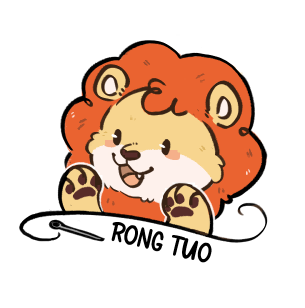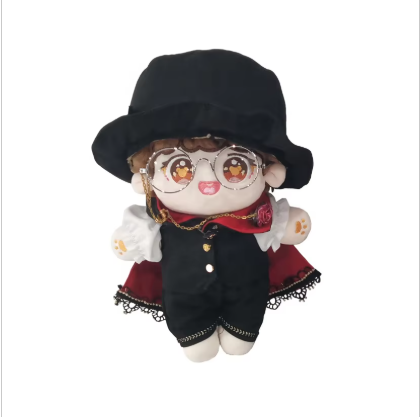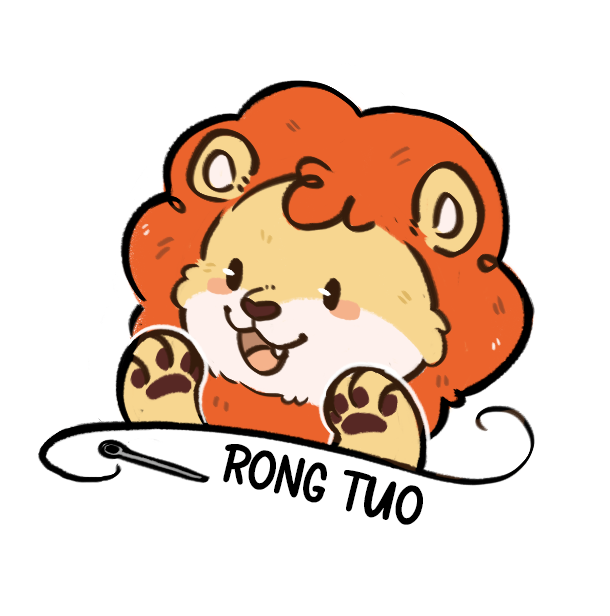Designing Your Custom Plush Hand Puppet
Choosing a Theme or Character
Picking out the right theme when making a custom plush hand puppet makes all the difference in how people will respond to it. Animals are always a safe bet since kids love them, but cartoon characters or stories from fairy tales also work wonders for drawing in different age groups. Before settling on anything, take some time to look around at what others have done successfully. Talk to potential users or check online communities where similar puppets are discussed. Surveys can be helpful too, though sometimes face-to-face conversations give better insights into what really grabs attention. Whatever choice made should match what the puppet needs to do. Educational puppets need characters that support learning goals while those meant for therapy sessions might require softer features and calmer expressions. Getting this alignment right creates stronger connections between the puppet and whoever interacts with it later on.
Sketching the Puppet's Features
Detailed sketches really help when trying to picture what the finished puppet will look like. Pay attention to things like how big it should be, what colors work best, and the texture details that give the puppet its own character. Try drawing different shapes, faces, and overall styles until something clicks with what the puppet needs to express. Don't be afraid to mess around with all sorts of designs until one feels right for what we're going for. Digital drawing tools are super helpful here since they let us tweak things without starting over from scratch every time. Once there's a good sketch in hand, showing it to whoever will actually build the puppet becomes much easier than trying to describe everything verbally.
Deciding on Movable Parts (Mouth, Arms)
Thinking about what kind of moving parts to include in a plush puppet requires looking at various ways to make things move around. Some folks start with basic string setups while others go for more complicated lever arrangements. The point is figuring out how these moving bits actually help tell stories better and let characters interact more naturally because those elements really bring life to the puppet during performances. Take a look at other puppets already out there to see what works well and get some ideas. Think about why someone would want their puppet to move in certain ways depending on if they're making something for teaching kids, putting on shows, or just having fun themselves. Getting this right means the puppet will grab attention and work properly no matter what story needs telling.
Essential Materials and Tools
Fabric Types for Plush Puppets
Fabric choice matters a lot when making those soft hand puppets that kids love so much. Most folks go with either fleece, felt, or regular plush material. Fleece feels super soft against little hands, which makes it great for characters meant to be cuddled. Felt works well too because it cuts easily and holds shape nicely during sewing. Then there's plush fabric that just screams luxury with its thick pile. But don't forget about how easy these materials are to clean after inevitable messes. Some fabrics need gentle washing while others can handle machine cycles without complaint. Experienced puppet crafters often suggest looking for anti-pilling options since nothing ruins a puppet faster than those annoying little balls forming on the surface after repeated use.
Stuffing Options for Durability
Getting the stuffing just right makes all the difference when making a plush hand puppet that lasts. Most folks go with polyester fiberfill, cotton, or foam as their main materials. These different stuffings change how heavy the puppet feels, what it's like to handle, and how long it stays looking good. Polyester fiberfill tends to be light on the hands and really soft against skin, which is great for kids' puppets. Foam gives a much sturdier feel though, so puppets hold their shape better during performances. From what I've seen in workshops, denser stuffing definitely holds up longer without losing its form. So picking out the right material isn't just about comfort either it actually determines whether the puppet keeps looking nice after months of use.
Must-Have Accessories (Eyes, Noses, Bells)
When working on making a puppet more interesting, picking out the right extras really matters. Buttons here and there, those little plastic eyes that won't pop off, plus colorful felt pieces can give it so much more character. Safety is definitely important though when kids will be playing with it, so everything needs to be attached properly without coming loose during use. Some folks even stick small bells inside or sew them onto certain parts so the puppet makes noise while performing. These sounds actually help tell stories better because they catch attention and keep people interested throughout shows. Just take time choosing what goes where and how things are fastened down, and before long anyone watching will find themselves drawn into whatever tale the puppet wants to share.
Step-by-Step Hand Puppet Assembly
Cutting and Sewing the Base Shape
Getting started on a hand puppet requires some good cutting skills first. The base shape needs to be cut accurately so everything fits together properly. A really sharp pair of scissors works great, though many crafters swear by rotary cutters for extra precision. For sewing, stick with basic stitches like straight or zigzag. These aren't just any old stitches they actually make the seams stronger without restricting movement too much, something that matters when making those funny faces and gestures later on. Safety counts too remember those scissors can draw blood if not handled right, and definitely keep hands away from sewing machine needles while working. One small accident could ruin hours of progress.
Attaching Facial Features Securely
Getting those facial features attached right makes all the difference when it comes to keeping eyes and noses from falling off after lots of handling. Most folks find that good old fashioned stitching works best for most fabrics. Try something like a tight backstitch or maybe a blanket stitch depending on what kind of material you're working with. Hot glue sticks work fast if time is tight, just remember not to grab any old craft glue since some varieties don't hold up well on fabric. When making puppets meant for kids to play with, adding an extra row of stitches around those features goes a long way toward preventing accidents. We've seen plenty of cases where poorly attached parts came loose during play, so taking that extra minute really pays off in the long run for both safety and overall durability.
Adding Functional Mouth Mechanics
A good working mouth makes all the difference when bringing a puppet to life with real expressions. Try making a basic hinged jaw with layered fabrics or go for something smoother with an elastic setup for those mouth movements. Always test how the mouth works before finalizing everything. The goal is getting that full range of motion without any stiffness or parts that don't line up right. When things get stuck or feel tight, most problems come down to either too much tension somewhere or components not sitting properly in their slots. A few small tweaks usually fix most issues. Spend time practicing with different mouth shapes and movements. This hands-on approach really brings out the character in puppets, making them more engaging during performances and interactions.
Professional Manufacturing Options
Benefits of Factory Production
Making plush hand puppets through factory production brings real benefits to manufacturers. Factories can crank out hundreds or even thousands of identical puppets, which means companies don't have to worry about quality variations between products. This matters a lot when fulfilling big orders where every puppet needs to look and feel the same. Industry data shows that mass produced puppets cut down on how long it takes to make them and give companies more flexibility with pricing. Bulk purchasing typically leads to lower costs per unit, so this approach works well for businesses looking to get more bang for their buck without sacrificing quality standards in their puppet line.
Minimum Order Quantities Explained
When it comes to making plush puppets, minimum order quantities or MOQs really matter for small businesses trying to get into the market. Most custom plush hand puppet manufacturers ask for at least 300 units before they even consider taking an order, companies like Plushtoymfg typically follow this rule. Why do they set such high numbers? Well, basically it's all about getting enough volume to make the production process efficient while still keeping things looking good quality wise. Factories need those bigger batches to work their machines properly and maintain consistent results across all items produced. Small business owners should know about these MOQ requirements early on so they can plan their budgets better and figure out if they have what it takes to reach those quantity targets without breaking the bank.
How to Collaborate with OEM Suppliers
Working with original equipment manufacturers (OEMs) needs some serious forethought if we want these supplier relationships to actually work out. When hunting down trustworthy partners, look at how long they've been around in their niche, read what other customers are saying online, and definitely ask to see actual product samples before committing. After getting things rolling, keeping everyone on the same page about exactly what designs need to be made and when they should be ready is absolutely critical. Nobody wants surprises down the line. For long term success, it helps to establish routine check-ins where both sides can share thoughts openly. Setting specific standards for quality checks throughout production also keeps everything running smoothly. All this effort pays off in steady product availability, which lets businesses grow steadily while still pushing creative boundaries in the world of custom plush puppets.
Creative Customization Tips
Personalized Embroidery Techniques
Adding embroidery really makes puppets stand out, especially when they get those special names or custom designs that connect with viewers on a personal level. Puppet makers love using this technique to put all sorts of detailed work into their creations, turning ordinary puppets into something truly one of a kind. For folks just starting out, there are plenty of easy tutorials showing how to stitch on soft materials. Pick out what design looks good first, then mark it lightly on the fabric. Most people find an embroidery hoop helps keep everything tight while working on stitches. Choosing threads that pop against the background color works best so everyone can see those little details clearly. Give it some time though - practice makes perfect! After a few tries, even beginners notice how embroidery changes a regular puppet into something special that feels uniquely theirs.
Incorporating Sound Modules
Adding sound modules to puppets really takes performances to another level, bringing in that extra layer of audio that grabs people's attention. These modules come in all sorts of ways too - some work when pressed, others respond to movement, making them suitable for pretty much any kind of puppet show out there. When putting these things in place, it's important to pick spots where they won't mess up the puppet itself. Usually best tucked inside the body area or hidden somewhere near the back of the head works wonders. Performers then find it much easier to trigger those sounds right when needed during shows. Take those cute talking animals or those interactive story puppets we see at children's events. They're perfect examples of what happens when sound gets properly integrated into puppetry. The stories become so much more engaging, kids get totally caught up in the magic, and everyone ends up having a better time overall.
Packaging Ideas for Branding
When it comes to custom puppets, creative packaging really makes a difference in how people see the brand and what they feel when they get their hands on the product. Packaging isn't just wrapping paper it's actually part of the brand itself, telling customers something about who we are and what matters to us. Going green with materials matches what many shoppers care about these days and helps position our brand as someone who cares about the planet. Recyclable cardboard boxes work great, or those special biodegradable pouches that break down naturally after use. For actual design ideas, think about creating themed packaging that tells a little story or colorful wrappers that catch attention right away at the store. The best packaging does double duty protecting the delicate puppet while making opening it feel like getting a gift. Customers remember this kind of experience, which keeps them coming back for more.
Frequently Asked Questions
What are the best themes for custom plush hand puppets?
Popular themes include animals, cartoons, and fairy tales. These themes tend to resonate with a wide audience and enhance engagement.
How can I securely attach accessories to my puppet?
Using stitching techniques like tight backstitch or blanket stitch ensures that accessories like eyes and noses remain securely attached over time.
What is the importance of minimum order quantities?
Minimum order quantities allow manufacturers to optimize production processes and maintain consistent quality, which is crucial for small businesses planning their budgets and orders.


